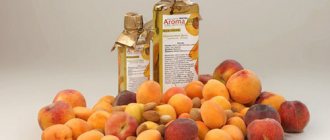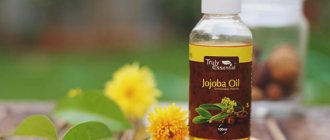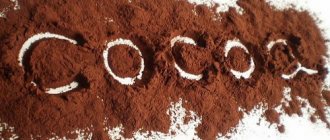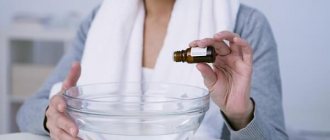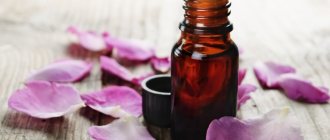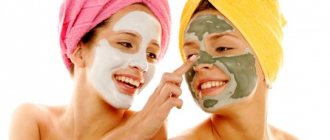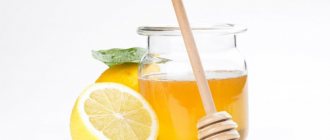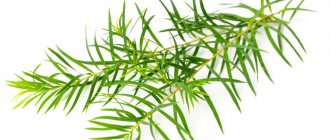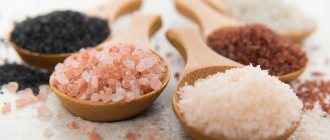Ylang-ylang oil is famous for its spicy, exotic aroma. Its sweetish smell with floral and fruity notes has a relaxing and calming effect on a person, and also stimulates erotic desire. However, this fragrant extract is used not only in the field of aromatherapy. It has unique healing and cosmetic properties. The aromatic oil has a complex effect on the skin, nourishing, healing and rejuvenating it. With the addition of ylang-ylang ether, homemade creams and face masks will not only be as beneficial as possible, but will also be filled with an intoxicating aroma.
general characteristics
Ylang-ylang is a tree that grows in the tropics. From its flowers, which resemble yellow irises, a fragrant essential oil is obtained.
Chemical composition
Ylang-ylang essential oil contains vitamins B, E, beneficial acids and other elements. Such a rich formula allows the oil to be used in skin care products.
Smell
Ylang-ylang has a bright floral aroma with sweet notes. Many people associate the smell with tropical islands, lightness and positive emotions. The famous perfume “Chanel No. 5” smells of this oil.
Selection rules
The highest grade is used for aromatherapy. First grade oil is suitable for masks, enrichment of creams and lotions.
If you want to improve your mood while cleaning, you can add inexpensive oil to the detergent.
It is better to choose oil in a dark glass bottle - this way it is protected from sunlight.
Advantages and disadvantages
Ylang-ylang oil has a wide range of applications:
- lifts the mood;
- normalizes heart rhythm;
- for women – regulates the menstrual cycle and reduces the symptoms of menopause;
- for men – helps restore potency;
- eliminates headaches;
- has low comedogenicity and is used to treat acne;
- increases skin elasticity;
- promotes regeneration;
- strengthens hair and nails.
The disadvantage of the oil is its rich smell. Its excess can cause nausea and headaches. Therefore, it should be used in mixture with other natural oils, such as lemon or mint. Also, the product can cause an allergic reaction, so before use you need to do a test on the crook of your elbow.
Contraindications for use:
- first 4 months of pregnancy;
- allergies and individual intolerances;
- low pressure.
Production technology
Ylang-ylang oil production technology
Tropical tree essential oil is obtained in two ways: steam and water distillation. The yellow inflorescences of Kananga are collected early in the morning during the period of active flowering. At this time of day, the aroma emitted by beautiful flowers is especially intense. Out of 100 kg of raw materials, only 1.7 kg of natural product remains at the output. The first to be obtained after distillation is the “extra” grade fragrant oil. It is used in cosmetology and in the manufacture of perfumes. The second fraction is an extract of ylang-ylang. Distillation takes three hours. After five hours, second and third grade oil is obtained from the raw material. These are cheap ingredients with the lowest concentration of beneficial substances. This product is used to make soap and produce inexpensive cosmetics.
Chemical composition
The ester contains elements such as linaol, ylangol, nerol, germacrene D, terpineol, geraniol, caryophyllene, benzyl acetate. In complex care, beneficial substances provide a healing effect, which is enhanced by combining various compositions.
Treatment with ylang-ylang essential oil
The healing effect of the product extends to various systems of the body, which makes it a universal remedy in the home medicine cabinet.
For neuroses, insomnia, loss of strength
Ylang-ylang oil has a relaxing effect, relieves anxiety and tension. For nervous conditions, the following methods are suitable:
- Cold inhalations. The most common way to carry them out is to use an aroma lamp. Add 4 drops of ylang-ylang oil to the bowl per 15 square meters of room area. You can purchase an aroma medallion for this.
- Aroma baths. Dissolve 4–7 drops of oil in water. The procedure time should not be more than 15 minutes. If you want to soak in the bath longer, you should reduce the oil concentration.
For cardiovascular diseases
In these cases, the same methods are suitable as for neuroses. It should be remembered that the use of essential oils is an auxiliary method and does not replace drug therapy prescribed by the attending physician.
Therapeutic massages
A general massage with the addition of 4-7 drops of ylang-ylang oil per 10 ml of base oil (for example, shea butter or grape seed) will have a relaxing effect and can help with reduced sexual activity. Acupressure is used for colds, runny nose, sinusitis and laryngitis.
For women's health
For menopause, severe premenstrual syndrome or irregular cycles, you can use:
- cold inhalations;
- aroma baths;
- intimate hygiene product: add 3 drops to soap suds, then rinse with soda solution.
Contraindications and safety measures
Despite its natural origin and many beneficial properties, ylang-ylang oil cannot be used in unlimited quantities. To avoid undesirable consequences, it is necessary to test for an allergic reaction. To do this, apply a couple of drops of distillate to the skin of the inside of the elbow. After 10-15 minutes you can evaluate the result.
The use of the remedy is strictly prohibited in the following cases:
- low blood pressure;
- allergic reaction;
- skin diseases.
Attention! It is not recommended to use the medicinal distillate for longer than three weeks.
Application in cosmetology
Enrichment of cosmetics
For this purpose, essential oil is used at the rate of 5-8 drops per 10 g of cosmetic base - cream, lotion, shampoo, mask, etc.
Against dry skin
In addition to the enriched cream, you can use rubbing (4-6 drops per 10 ml of base oil) and bandages. These procedures contribute not only to nutrition, but also to skin regeneration and rejuvenation.
Mask for problem skin
If you are prone to rashes, light oils (for example, jojoba) are used as base oils. Add 2 drops of ylang-ylang and lemon essential oil to a teaspoon of base oil, leave on your face for 20 minutes, then rinse generously with cool water.
Salt peeling for oily skin
The procedure is suitable for those with oily skin with clogged pores, but without severe inflammation.
You will need:
- 1 tsp. sea salt;
- grape seed oil;
- ylang-ylang essential oil.
Soak sea salt in base oil and add 2 drops of ylang-ylang essential oil. Apply the resulting mixture to a cotton pad and gently scrub the skin. Apply once a week. Exfoliation will help clear pores and prepare your skin for further moisturizers.
Rejuvenating mask
This mask helps smooth out fine wrinkles and improves skin elasticity.
Mix:
- 1 tbsp. l. olive or peach oil;
- 1 tsp. honey;
- 1 tbsp. l. sour cream;
- 1 drop of ylang-ylang essential oil.
Apply the mask generously for 20 minutes, then rinse with warm water.
For nails
Ylang-ylang essential oil eliminates brittleness and splitting of nails, smoothes them and nourishes the cuticle, promotes recovery after extensions and the use of gel polishes.
Ylang-ylang essential oil eliminates brittleness and splitting of nails
Massage of nails on hands and feet
Required:
- base oil (almond, apricot) – 1 tsp;
- ylang-ylang essential oil – 5 drops.
Mode of application:
Heat the base oil in a water bath, then add ylang-ylang oil and mix well. Apply the mixture to each nail and massage for up to 5 minutes. Do not rinse, just wipe your fingers with a cloth.
For hair
In addition to enriching shampoos and conditioners, aromatherapy combing also benefits your hair. Apply a few drops of ylang-ylang essential oil to a comb made of natural materials (the easiest way is to use wood) and comb your hair. The effect is noticeable after 2–3 weeks.
For body
For body care, it is useful to use the already mentioned methods of enriching cosmetics, as well as oil massage and aroma baths.
For eyebrows and eyelashes
The use of ylang-ylang oil in combination with base oil (almond, coconut, grape seed) will help activate the growth of new hairs, enhance their pigmentation and prevent hair loss. To do this, the mixture is applied to the eyebrows and eyelash line for 10–15 minutes, then washed off with warm water or removed with a napkin. This mask should not be left on overnight as it can cause irritation if it gets into your eyes.
For weight loss
Using ylang-ylang oil as a relaxant will reduce your overall stress levels. This helps bring your weight back to normal. In addition to aromatic baths, ylang-ylang oil can also be added to bath products. Combined with the effect of removing excess fluid, the oil will relax and relieve fatigue.
By adding a few drops of ylang-ylang oil to your base massage oil, you can reduce the appearance of cellulite.
Oil for health
The use of Ylang-Ylang oil in a bath is useful; it can save a person from many ailments and unpleasant situations. In this case, it is recommended to spray the oil solution in the steam section of the bath. This technique will improve blood flow, relieve acne and some other dermatological diseases of the eczema type, headaches and toothaches. It is also useful to soak bath brooms in a solution of this oil in combination with pine, fir or spruce oils. The ratios for this procedure are based on five liters of hot water, five drops of each oil.
It is useful to do such broom procedures especially for bronchitis, sore throat, acute respiratory infections, acute respiratory viral infections, of course, if the disease is not accompanied by fever. It is especially useful to do this at the initial stage of the disease.
The composition of essential oils is so rich in resins, vitamins and other elements that they can sometimes work wonders. The oil affects not only the nervous system, but also the entire body as a whole. The result of using oil in complex treatment is achieved many times faster.
Combination of ylang-ylang essential oil with others
For massage, ylang-ylang can be combined with almost any base oil.
For aromatherapy it can be mixed with oils:
- citrus fruits (lemon, orange, tangerine, grapefruit);
- Melissa;
- verbena;
- rose;
- geranium;
- jasmine;
- lavender;
- neroli;
- sandalwood;
- patchouli;
- pink tree;
- juniper;
- incense.
Simple alchemy: a remedy for aging skin
How painfully medieval scientists struggled with the problem of eternal youth! They conjured over the flasks, resorting either to white or black magic. They simply did not have two miraculous components at hand, on the basis of which the desired potion could be made in a few minutes.
Let's name these ingredients and their quantities:
- ylang-ylang oil – 5 drops (convenient to measure with a pipette if the bottle does not have a dispenser);
- half a black radish.
In a very bitter, but incredibly healthy vegetable, we first make a hole with a fruit knife or spoon, and then make several cuts on the walls of the hole. After a couple of hours, approximately 30 milliliters of juice will flow into it. Our flower extract, which cannot be mixed with water or even glycerin, will easily combine with the liquid released from the radish, probably because it also contains essential oils.
With this simple method we managed to obtain an elixir with a harmoniously balanced vitamin composition. The dosage indicated in the recipe is enough for 2-3 procedures if the woman only lubricates her face. However, the neck and décolleté should also be nourished and rejuvenated - for this you just need to prepare three times as much product. They are advised to replace their day creams from time to time.
After 2–2.5 months of regular use, we will check the effect:
- The sagging under the chin will disappear, as a result of which the contours of the face will become clearer. Take a photo before using this home remedy, take a photo of yourself after taking a vitamin course - and the differences will immediately show up.
- In the morning, the wrinkles that remain on the cheeks and cheekbones from the pillow will be smoothed out much faster than before. This means that turgor has improved.
- Fatigue will not be accompanied by a gray-yellow complexion. Naturally pale ladies will notice that their skin has turned pink.
How to store ylang-ylang essential oil
To protect from sun rays, a dark glass bottle is ideal.
Plastic is not a suitable container for essential oils, as a chemical reaction may occur. The bottle should be in an upright position and tightly closed. Ylang-ylang oil can be stored at room temperature. All essential oils are flammable, so leaving them near fire is strictly prohibited.
Ylang-ylang - what kind of plant is it?
This plant is still grown artificially for cosmetic purposes in Madagascar and the Comoros Islands. Ylang-ylang essential oil is obtained by steam distillation, which helps preserve all the beneficial substances. There are 2 types of oils: ylang-ylang and cananga, they are produced from the same flower, but the first squeeze is of higher quality.
In its homeland, the plant is respectfully called the “tree of spirits”, “crown of the East”, “flower of flowers” not only for its amazing beauty. It contains substances with a strong sedative and antiseptic effect, which allows it to be used in medicine. The tree blooms all year round, which increases the chances of rich harvests.
Tropical Ylang-Ylang – what is it:
- The buds are formed in the axils of the leaves and grow up to 8 cm in diameter.
- When blooming, the petals change color from yellow-green to bright yellow.
- A strong, delicate aroma can be felt 35 m away.
- The trunk reaches 300 cm, the bark is grayish-silver.
- The leaves are elongated and pointed.
Fighting inflammation and swelling
A wonderful invention - tea leaves in tea bags. Green tea lovers, do not rush to throw the bags taken out of your cups into the trash bin! Cool them and then follow the suggested technology.
To create cosmetic applicators we take:
- 4 bags of drunk green tea;
- 8 drops of ylang-ylang oil.
Divide 8 by 4 - we get 2 drops of plant essence for each package. When the droplets seep through the filter paper, lightly knead the tea bags so that the oil is mixed with the remaining tea leaves in them.
We lie down without a pillow, placing plastic or a thick towel under our heads, and apply homemade applicators to problem areas (areas covered with a rash, affected by allergies).
- Green tea will relieve redness; with prolonged use of application masks, it normalizes the activity of the sebaceous glands, and when their work is restored, it will serve as a prophylactic that will prevent the appearance of new inflammations, including acne.
- Ylang-ylang will promote regeneration and smooth out bumps and scars left by wounds.
To remove swelling of the upper eyelids and bags under the eyes, the same tea bags, soaked in essential oil and cooled in the freezer, should be applied to the undereyes and under the eyebrows, without touching the eyelashes.
